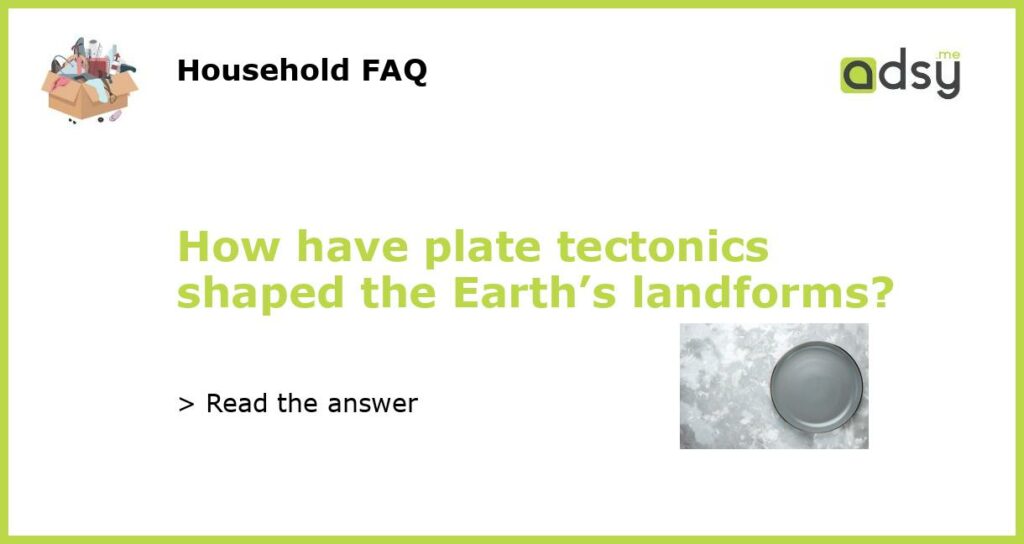Plate Tectonics: A Dynamic Earth
Plate tectonics is a scientific theory that explains how Earth’s lithosphere, or outer layer, is broken into several large and small pieces called tectonic plates. These plates float on the semi-fluid layer below, known as the asthenosphere, and constantly move and interact with each other. Over millions of years, the continuous movement of these plates has dramatically shaped the Earth’s landforms.
The Role of Convergent Plate Boundaries
At convergent plate boundaries, two plates collide with each other. There are three types of convergent boundaries: oceanic-oceanic, oceanic-continental, and continental-continental. Each type of convergent boundary has different effects on landforms.
When an oceanic plate collides with a continental plate, the denser oceanic plate sinks beneath the less dense continental plate in a process called subduction. This subduction creates deep ocean trenches, such as the Mariana Trench, and causes volcanic activity along the subduction zone. The magma that rises to the surface through volcanic eruptions forms mountain ranges, like the Andes in South America.
When two continental plates collide, neither plate subducts due to their similar densities. The collision forces the two plates to compress and buckle, creating large mountain ranges such as the Himalayas. The Himalayas, which formed as a result of the collision between the Indian Plate and the Eurasian Plate, are the highest mountain range in the world.
The Impact of Divergent Plate Boundaries
Divergent plate boundaries are areas where two plates move away from each other. This movement leads to the upwelling of magma from the asthenosphere, which forms new crust and landforms. The most well-known example of a divergent boundary is the Mid-Atlantic Ridge.
As the plates move apart, magma rises and solidifies to form underwater mountain ranges called mid-ocean ridges. These ridges create a rift valley, where new crust is continuously formed. The spreading apart of the plates at divergent boundaries also leads to the formation of rift valleys on land, such as the Great Rift Valley in East Africa.
Divergent boundaries also result in volcanic activity as the upwelling magma reaches the surface. Iceland, situated along the Mid-Atlantic Ridge, is a prime example of volcanic activity at a divergent boundary.
The Role of Transform Plate Boundaries
Transform plate boundaries occur where two plates slide past each other horizontally. Unlike convergent and divergent boundaries, transform boundaries do not create or destroy land, but they do have a significant impact on landforms.
Transform boundaries can produce powerful earthquakes as the plates grind against each other. One well-known example is the San Andreas Fault in California. These earthquakes can cause faults, fractures, and the displacement of land. The resulting landforms, such as fault scarps and mountain ranges, serve as evidence of the continuous movement occurring along transform boundaries.
The Influence of Plate Tectonics on Landforms
Plate tectonics have shaped the Earth’s landforms over millions of years, giving rise to mountain ranges, ocean trenches, rift valleys, and fault lines. The movement and interaction of tectonic plates are responsible for the formation of these distinct landforms and the constant remodeling of Earth’s surface.
Understanding plate tectonics is crucial in comprehending the geological processes that have shaped our planet. By studying the movement and effects of tectonic plates, scientists can forecast potential hazards such as earthquakes and volcanic eruptions, allowing for better disaster preparedness.
Plate tectonics continue to shape the Earth’s landforms today and will continue to do so in the future. The dynamic nature of our planet ensures that there will be continued geological changes and the formation of new landforms as tectonic plates continue to shift and interact with each other.






